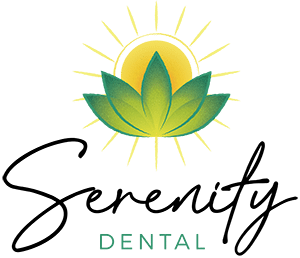Have you ever considered how much impact small, everyday habits have on your teeth? Making the right choices throughout your daily routine can be the secret to preserving strong, bright smiles. By focusing on easy-to-follow tips and techniques, everyone can learn how to keep their teeth looking and feeling healthy for years to come. This blog offers a simple guide on how to keep my teeth healthy, including professional insights on what kind of toothbrush should I use and what kind of toothpaste is best. Follow these strategies, and watch your smile thrive!
1. Establish a Consistent Cleaning Routine
One of the most effective ways to keep teeth in good shape is to maintain a solid daily routine. When wondering how to keep my teeth healthy, the first step involves brushing at least twice a day. If possible, brush about 30 minutes after each meal or snack. This habit helps clear away food particles and bacteria that can accumulate between mealtimes.
To brush effectively:
Spend at least two minutes brushing. Think of it as dividing the mouth into four sections and giving each section about 30 seconds of attention.
Use gentle, circular motions to massage the gums and clean the tooth surface thoroughly. Harsh scrubbing may damage the enamel and irritate the gums.
Don’t forget your tongue! Bacteria can collect there, contributing to bad breath and plaque buildup.
Flossing is just as crucial. Take about 18 inches of dental floss and work it gently between each tooth. Move the floss in a C-shape, hugging the side of each tooth to remove plaque hiding near the gumline. This technique reduces the risk of gum disease and helps remove debris in places a toothbrush might miss.
For an extra level of clean, consider adding an antibacterial or fluoride mouthwash. Rinsing for about 30 seconds can freshen breath while fighting bacteria and strengthening tooth enamel. By combining consistent brushing, flossing, and rinsing, individuals set a strong foundation for excellent dental health.
2. What Kind of Toothbrush Should I Use?
With so many toothbrushes on the market, deciding what kind of toothbrush should I use can feel overwhelming. There are many shapes, sizes, and styles. The key factors to look for when selecting a toothbrush include soft bristles, a comfortable handle, and an appropriately sized head to fit your mouth.
- Bristle type: Soft bristles effectively clean tooth surfaces and protect the gums from irritation. Hard bristles may wear away enamel over time or cause gum discomfort.
- Electric vs. manual: An electric toothbrush with a rotating or oscillating head can be more effective at plaque removal, especially for those with limited mobility or who struggle with technique. Still, a manual toothbrush used properly can be just as effective. Choose the style that feels easiest to handle every day.
- Size and handle design: Select a toothbrush that comfortably reaches all areas of your mouth. A brush with a slightly angled neck can help you clean around the molars with fewer awkward wrist movements.
No matter the preference, replace your toothbrush (or the brush head, if using electric) every three to four months. Frayed bristles lose their shape, making it harder to clean effectively and gently.
3. What Kind of Toothpaste Is Best?
Understanding what kind of toothpaste is best can also ensure you get the most benefits from brushing. Generally, a high-quality toothpaste contains fluoride, an ingredient that helps strengthen tooth enamel and lower the risk of cavities. Other useful components may include tartar-control agents, whitening ingredients, or compounds designed to reduce tooth sensitivity.
- Fluoride Toothpaste: Fluoride supports healthy tooth enamel by making it more resistant to the acids produced by oral bacteria. Virtually everyone can benefit from fluoride, and many dental professionals recommend it for optimal daily use.
- Sensitivity Toothpaste: For those experiencing temperature sensitivity, toothpaste that blocks nerve pathways in exposed dentin can bring noticeable relief over time.
- Whitening Toothpaste: These often contain mild abrasives or special chemicals designed to polish the surface of the teeth. They can help remove light surface stains but may not be as effective on deeper discoloration.
Look for toothpaste carrying the American Dental Association (ADA) Seal of Acceptance whenever possible. This label indicates that the toothpaste has been reviewed for safety and effectiveness, providing an extra layer of reassurance.
4. Benefits of Routine Dental Checkups
While daily habits are critical in maintaining oral health, professional checkups play a central role too. According to various reputable dental sources, including the ADA, regular visits to a trusted dentist help detect issues early and provide thorough cleanings that go beyond what is possible at home. During these appointments, dental professionals can remove built-up tartar, spot early signs of cavities, and give personalized advice based on each patient’s needs.
Here are a few additional benefits of routine dental checkups:
Early detection of dental problems: A small cavity can get much bigger when left untreated. Regular exams catch these issues promptly, saving time, cost, and potential discomfort later.
Professional cleaning: Even with excellent oral hygiene, some plaque can turn into hardened tartar that only a professional can remove safely. Regular cleanings help keep teeth polished and gums healthy.
Tailored guidance: Dentists and hygienists offer tips on brushing technique, flossing methods, and product recommendations to address individual concerns, including how to keep my teeth healthy based on personal risk factors.
Prevention of gum disease: Gum health is closely tied to overall wellness. Routine checkups and preventive care significantly reduce the likelihood of infections and inflammation in the gum tissues.
These benefits highlight the importance of seeing a dentist at least twice a year. In addition to improving oral health, routine appointments help build confidence and relieve concerns that might arise from hidden dental issues.
5. Healthy Lifestyle Choices for Strong Teeth
In addition to consistent brushing and flossing, certain lifestyle habits contribute to better oral health. Hydrating with water, for instance, helps rinse away food particles and balances the mouth’s pH levels. A balanced diet rich in calcium and vitamin D promotes strong teeth, while sugar-filled snacks and beverages can encourage plaque and acid buildup.
Avoid using teeth for tasks like tearing open packages or biting down on hard objects. These actions can lead to chips or cracks in the enamel. If you engage in sports, use a custom-fitted mouthguard to shield both teeth and gums from injury.
These small choices can go a long way when you’re focused on how to keep my teeth healthy. By combining good nutrition, proper hydration, and safeguarding measures, you strengthen the foundation for lasting dental well-being.
Take Action for a Healthier Smile
Developing strong daily dental habits is the key to maintaining a bright, confident smile. Whether it’s determining what kind of toothbrush should I use or selecting what kind of toothpaste is best, being consistent and mindful makes a significant difference. Brushing regularly, flossing carefully, and adding an antibacterial rinse all support healthy teeth in the long run.
In addition to daily care, don’t underestimate the power of professional checkups. Regular appointments offer deeper cleaning, early detection of potential problems, and guidance for your specific needs. If you have questions or need tailored recommendations, Serenity Dental can help you take the next step.
Located at 1203 W Harold St. Olathe, KS 66061, Serenity Dental provides comprehensive oral health services under the expert guidance of Dr. Silva. Reach out at 913-229-4519 to schedule an appointment or learn more about customized strategies to boost your dental health. By combining diligent home care with professional support, you’ll be well on your way to preserving a bright, vibrant smile for years to come.

